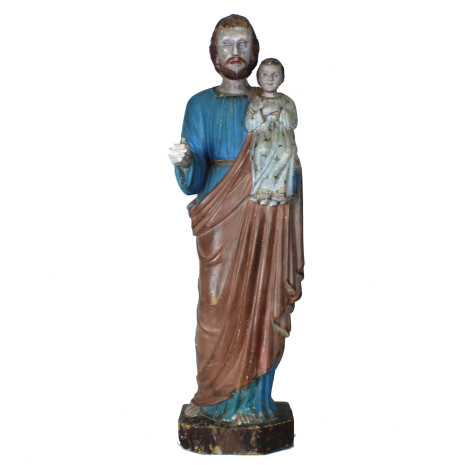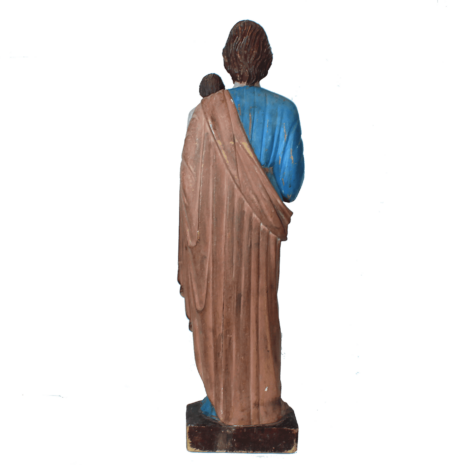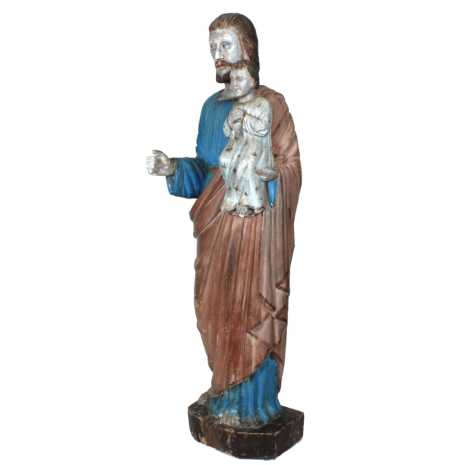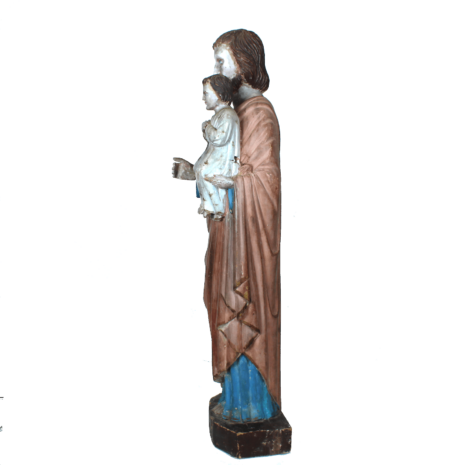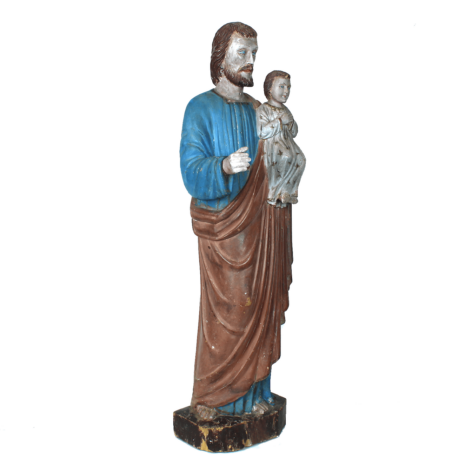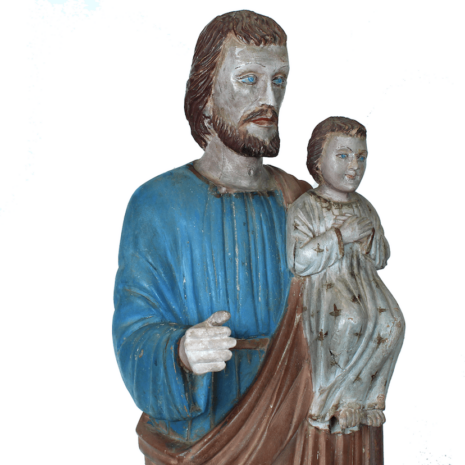Rare Antique Saint Joseph with Christ Child, India (9518)
Original price was: $4,800.00.$3,900.00Current price is: $3,900.00.
H: 29.5″ W:7.75″ D:5.25″ | CALL 213-568-3030 OR EMAIL [email protected] FOR SHIPPING.
Rare magnificent carving of Joseph with the Christ child is a blend of Portuguese and European with indigenous South Indian traditions. Joseph is light-skinned, blue-eyed, with western features without a halos, modest and very human with a straightforward spiritual presence.
Description
This important carving of Joseph with the Christ child from Kerala in South India reflects a blend of Portuguese and European traditions with the indigenous traditions of South India. Christian missionaries built churches in Kerala from 1510 through the18th century. They brought carvings, paintings, and other items to decorate the them which local Indian artists studied to learn techniques and depictions that reflected Western Christian tastes.
While the iconography, dress, and the postures of figures were western, the simplicity and candor of the work, the direct portrayal of the figures with natural, unpretentious, and human characteristics replicate Indian tradition carvings. Religious pieces like this were completed by highly skilled, talented, and experienced artists who were already doing outstanding work for Indian Hindu, Buddhist, and Jain patrons.
Many pieces by local artists were exported to Europe where they were readily accepted and admired. Although Indian made religious items were stylistically different from the ones brought there by missionaries, the blend of European inspiration and subject matter with the skill, techniques, practices, and expertise of local carvers was a major success.
In this remarkable carving Joseph stands in an altered European contrapposto with a gently curved lower body and upper body forward instead of curving in the opposite direction. Joseph is tall and slightly elongated portrayed as a light-skinned, blue-eyed, bearded man with western features holding the infant Christ with his left hand. He wears a long blue biblical tunic reaching his bare feet with gold borders at the neck and below the chest. A burnt-umber shawl tied over his left shoulder covers most of the tunic and falls in beautifully-carved, long, and deep pleat patterns that extend to the right foot. His right leg extends slightly with fewer folds.
The infant Christ wears a white garment small gold star-like designs. His eyes are also blue, he has a child’s smile, and his hands are crossed at the chest.
Joseph, as his earthly father and the patron saint of workers, has a thoughtful expression as he holds his right arm up that may have held lilies as a symbol of purity. This lovely and simple representation is without halos, as this is a modest and very human representation conveying a substantial yet straightforward spiritual presence.
Sources
artsandculture.com, Christianity in Asia: Sacred Art and Visual Splendour, National Heritage Board, Singapore
asianartnewspaper.com, Nations with Asian Art at Least Some Roads Lead to Rome
ucanews.com, The Portuguese Colony of Christian Imagination in India
Additional information
| Place of Origin | India |
|---|---|
| Period | Antique (1200-1920) |
| Date | 19-20th Century |
| Materials and Technique | Wood |
| Dimensions (inches) | Ht: 29.5” W: 7.75” D: 5.25” |
| Dimensions (metric) | Ht: 36.83cm W: 16.51cm D: 13.97cm |
| Weight | 10lbs 9oz |
| Condition | Excellent, fine patina demonstrating age and use |
| Item Number | 9518BMEL |
| Shipping Box Size | Oversized. Call 213-568-3030 or email [email protected] for shipping. |

